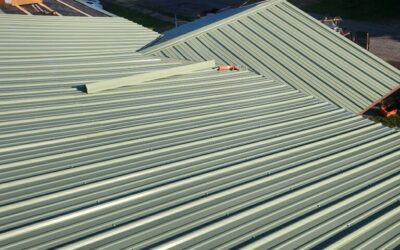How to Waterproof a Leaking Roof: The Complete Homeowner’s Guide
A leaking roof can be an urgent crisis. Whether you’re dealing with drips, stains, or structural damage, effective waterproofing can save you from pricey repairs down the road. This guide walks you through every step—from identifying leaks to choosing waterproofing materials and long-term maintenance—so your roof stays dry and durable.
1️⃣ Identify the Source Before You Start
Before applying sealants or coatings, pinpoint the leak’s origin. Common leak sources include:
- Damaged or missing shingles
- Cracked or corroded flashing around chimneys, vents, skylights
- Deteriorated underlayment or ice dams
- Ponding water on flat or low-slope sections
- Clogged gutters causing overflow
Climbing into the attic during rainfall or using a garden hose can help trace leaks from below. Accurate diagnosis saves time and money.
2️⃣ Emergency Fixes: Quick and Temporary
When a leak appears unexpectedly:
- Tarp the area temporarily to stop active drips
- Apply roofing caulk or sealant around flashings or small punctures
- Replace broken or missing shingles
- Clean gutters to prevent water backflow
- Trim branches to reduce debris buildup
These actions are temporary solutions—follow up with permanent repair soon.
3️⃣ Upgrade Your Flashing
Flashing seals critical roof junctions like chimneys, valleys, and vents. Effective waterproofing requires:
- Replacing old flashing with rust-resistant materials like aluminum, copper, stainless steel
- Ensuring flashing pieces overlap properly and seal tightly
- Re-sealing perforated nails and joints with roofing cement
- Checking metal edges regularly for cracks or displacement
Well-installed flashing is a long-term defense against leaks.
4️⃣ Strengthen the Underlayment
Underlayment acts as a hidden waterproof barrier beneath shingles. Improve protection using:
- Ice and water shield along eaves, valleys, around protrusions
- Synthetic underlayment across the full deck—durable and safer than felt
- Upgraded rubberized asphalt underlayment in key areas
- Ensure proper overlap and nailing as per local code
A high-quality underlayment system significantly improves waterproofing.
5️⃣ Embrace Waterproof Membranes
For flat or low-slope roofs, consider:
- Liquid-applied membranes (polyurethane, silicone, or acrylic) – seamless waterproof layer
- EPDM rubber membranes – durable, low-maintenance sheets bonded to the deck
- TPO or PVC membranes – thermally welded, UV-resistant single-ply sheets
For flat roofing, membranes provide comprehensive protection against ponding and leaks.
6️⃣ Use Bituminous Waterproofing
For affordable yet effective coverage:
- Torch-on bituminous rolls or roll roofing (BUR) are strong against UV and pooling
- Best suited for porches, garages, flat roof sections
- If well-maintained, these systems offer 10–20 years of protection
7️⃣ Advanced Options: Crystalline & Polyurea
- Crystalline waterproofing penetrates concrete decks and self-seals microscopic cracks
- Polyurea coatings spray into seamless, high-performance barriers lasting decades
These options are ideal for terraces and complex roof geometries needing long-term resilience.
8️⃣ Pitch & Drainage: Critical Design Elements
Ensure water doesn’t pool:
- Maintain a minimum slope and proper valley angles
- Add scuppers or roof drains to remove standing water
- Maintain clean gutters and install guards to prevent overflow
Good drainage prevents moisture buildup and structural deterioration.
9️⃣ Enhance Ventilation
A dry roof requires airflow. Condensation buildup worsens leaks:
- Use intake vents at eaves and exhaust vents like ridges or turbines
- Inspect and clear blocked venting channels
- Pair waterproofing upgrades with ventilation fixes
10️⃣ Material Comparison at a Glance
| System | Best For | Lifespan | Cost |
|---|---|---|---|
| Liquid Membrane | Flat roofs, complex shapes | 5–15 yrs | Moderate |
| EPDM Rubber | Flat/low-slope roofs | 30–50 yrs | Moderate |
| TPO/PVC Membrane | Flat commercial/residential | 20–30 yrs | Higher |
| Bituminous Roll Roofing | Porches, garages, flats | 10–20 yrs | Low–Medium |
| Crystalline Waterproofing | Concrete decks | 30+ yrs | Higher |
| Polyurea Coating | Exposed concrete, terraces | 25+ yrs | High |
11️⃣ DIY vs. Professional Installation
- DIY-friendly: Sealants, shingles replacement, pond prevention
- Requires pros: Membranes, crystalline, polyurea systems, complex flashing
- Complex systems need trained installers for durability and warranty coverage.
12️⃣ Inspection & Maintenance Schedule
- Twice annual inspections—especially spring and fall
- Clean valleys, gutters, drains regularly to prevent blockages
- Check flashings and caulking for wear
- Reapply coatings/membranes per manufacturer recommendations
- Post-storm inspections to catch new damage early
Regular upkeep can extend roof life by 25%+
13️⃣ When It’s Time to Re-Roof Instead
If multiple leaks persist, shingles are failing, flashings rusted, or deck rotted, consider a complete re-roof. This ensures all waterproofing layers are reset and reliable.
14️⃣ Local Insight: Ashtabula, OH Region
With heavy lake-effect snow and frequent freeze-thaw cycles, roofing in Ashtabula requires:
- Ice/water shield along eaves and valleys
- Synthetic underlayment rated for cold climates
- Reliable drip edges and ventilation systems to prevent ice dams
Local specialists understand these demands and design effective waterproofing systems.
15️⃣ Step-by-Step Waterproofing Guide
- Inspect & locate leak
- Apply emergency seal or tarp
- Replace flashing and damaged membrane
- Install ice/water underlayment in critical areas
- Choose main waterproofing system (membrane, coating, etc.)
- Ensure proper drainage and pitch
- Verify ventilation is balanced
- Schedule professional inspection
- Plan biannual maintenance
16️⃣ Frequently Asked Questions (FAQ)
Q: Can I waterproof a roof in winter?
A: Some methods work in cold temps, but adhesives and coatings cure poorly below 40°F. Better to wait for milder weather.
Q: How long do coatings last?
A: Liquid membranes generally last 8–15 years; EPDM up to 50 years; crystalline and polyurea systems 25+ years.
Q: What’s the cheapest waterproof fix?
A: Bituminous roll roofing is cost-effective but not ideal for main homes. Sealants/tarps are cheap emergencies only.
Q: Do I still need gutters?
A: Yes—proper drainage protects waterproofing and prevents leaks at edgings and facades.
17️⃣ Final Thought: Achieve Leak-Free Protection
Effective waterproofing combines leak diagnosis, strong underlayment and flashing, durable membrane or coating, drainage, and ventilation. Done right, it can protect your home for decades and bring peace of mind.
Ready to Waterproof Your Roof in Ashtabula, OH?
At S&K Construction & Remodeling, we offer expert waterproofing using high-grade underlayment, precision flashing, and advanced membrane systems tailored to local weather challenges. Reach out for a free inspection and waterproofing quote today.
 (440) 307-2060
(440) 307-2060

